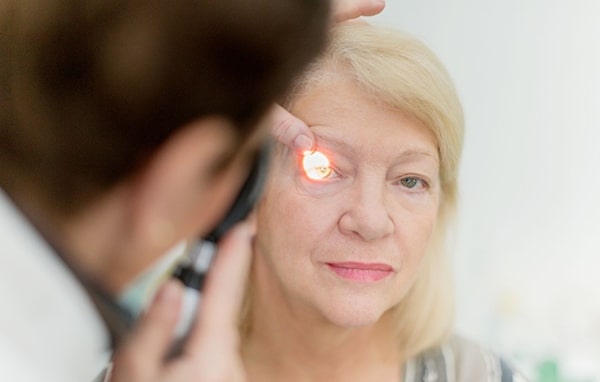What Are Cataracts?
What Are Cataracts?
Millions of people around the world experience cataracts, a prevalent condition that affects the eyes. This occurs when the normally clear lens of the eye becomes cloudy, causing difficulties with vision. While aging is a common cause, there are a multitude of factors that can play a role in the development of cataracts.
Vision Problems with Cataracts
The presence of cataracts can bring about a variety of vision issues that greatly affect daily activities. As the lenses become cloudy, a distinct haziness in vision emerges. This gradual blur makes it difficult to see fine details and focus on objects, creating obstacles in everyday tasks. Therefore, it is important to not overlook the significance of this « hazy meaning. » People with cataracts may experience a significant decrease in visual sharpness, almost like peering through a misty pane of glass. This blurred quality in eyesight is often caused by a gradual buildup of protein in the lens, causing a blockage of light. In addition to the overall haziness, a person with cataracts may also experience other symptoms. Colors may lose their vibrancy and take on a yellowish tint, and the ability to perceive contrast can be reduced. These changes can make it difficult to differentiate between similar hues and accurately judge depth. Individuals with cataracts often have trouble with glare, especially when exposed to bright sunlight or when confronted with headlights while driving at night.
Symptoms of Cataracts
It is vital to grasp the wide range of signs associated with cataracts in order to detect and treat them early on. One of the most common indicators is the haziness or cloudiness of vision mentioned earlier, which can deteriorate gradually. Additionally, people may notice a significant decline in their visual clarity, making it challenging to read, watch TV, or recognize familiar faces. People with cataracts may experience a unique sign: heightened sensitivity to light, also known as photophobia. This sensation can make it unpleasant to be in well-lit surroundings and may lead to frequent squinting. Moreover, navigating through low-light scenarios, like at dusk or in dimly lit spaces, can also be challenging for those with cataracts. Halos, those hazy circles that appear around lights, are a telltale sign of cataracts. Especially at night, they can be a bothersome and even hazardous distraction. People with cataracts may also find that they need to update their eyeglass prescription more often than usual.
By catching these signs of cataracts early on, individuals have the power to promptly seek medical help and receive necessary treatments like corrective lenses or surgery. Consistent eye exams play a crucial role in staying on top of cataract progression and effectively managing them, ultimately ensuring the best possible vision and improved quality of life.
Causes of Cataracts
It is imperative that we comprehend the multitude of factors that contribute to cataracts, as this knowledge can help us take preventive measures and effectively manage the risk factors associated with this prevalent eye ailment. The development of cataracts is heavily influenced by the natural process of aging. Over time, the proteins in our eye’s lens may deteriorate and merge, causing a cloudy appearance. This unavoidable consequence of aging is a major contributing factor to the high occurrence of cataracts, especially among older individuals. Cataracts are a crucial risk to consider for people with diabetes. The metabolism of sugars may shift in individuals with diabetes, resulting in a potential impact on the lens’s clarity. Consequently, the excess sugar levels present in the eye’s fluids can cause cataracts to form at a younger age than in non-diabetic individuals. Did you know that smoking has been pinpointed as a modifiable risk factor for cataracts? The chemicals found in tobacco smoke have the ability to expedite the clouding of the lens, ultimately raising the chances of developing cataracts. Therefore, not only does kicking the habit have positive effects on one’s general well-being, but it also plays a crucial part in diminishing the likelihood of developing cataracts.
Exposure to UV rays over a long period of time is a known environmental factor that can lead to cataracts. The sun’s powerful UV rays can gradually harm the proteins in the lens, causing the likelihood of cloudy vision to rise. To combat this, wearing sunglasses with UV protection is a simple yet impactful way to prevent cataracts. A lack of important nutrients, such as vitamins C and E, has been found to play a role in the development of cataracts. To reduce this risk, incorporating a variety of fruits, vegetables, and other rich with essential nutrients foods into your daily diet is crucial. Having a genetic predisposition can contribute to the development of cataracts. Therefore, it is crucial to stay diligent in getting regular eye exams and taking preventative steps to reduce any other potential risk factors, especially if cataracts are common in your family. It’s important to note that certain medications, like corticosteroids, can significantly raise the risk of developing cataracts. Therefore, it is essential for individuals who are taking these medications long-term to have open and thorough discussions with their healthcare providers about potential side effects. When appropriate, they should also consider alternative medication options.
By gaining a deeper understanding of the various factors that contribute to cataracts, individuals are given the power to make educated decisions about their lifestyle and proactively take measures to minimize their risk. This could include adopting a nutritious diet, refraining from smoking, shielding the eyes from harmful UV rays, and managing any preexisting health conditions. Furthermore, routine eye check-ups play a crucial role in detecting and managing potential problems before they worsen. With a comprehensive approach, clear vision can be maintained and the effects of cataracts can be minimized.

Diagnosing Cataracts
Efficient and precise detection of cataracts is essential in effectively treating and maintaining excellent vision. Eye care experts utilize a variety of methods and evaluations to determine the existence and extent of cataracts. The first and most crucial step in detecting cataracts is a comprehensive eye exam. This involves a thorough evaluation of one’s visual acuity, or their ability to see clearly at varying distances. If there are any changes in an individual’s need for prescription glasses, it may be an early warning sign of cataracts, warranting a closer look. By utilizing a slit lamp examination, eye care experts are able to thoroughly examine the anterior segment of the eye, including its lens. This valuable procedure offers an up-close and enlarged perspective, making it possible to identify any haziness or cloudiness in the lens, which is a telltale sign of cataracts. Examining contrast sensitivity is a vital component of cataract diagnosis. The presence of cataracts can greatly affect one’s ability to discern slight variations in color and contrast. Conducting sensitivity tests can reveal any alterations in eyesight that could potentially signify the onset of cataracts.
During a dilated eye exam, eye drops are utilized to widen the pupils, resulting in a more thorough view of the lens and retina. This comprehensive perspective allows for a careful assessment of the lens’s clarity and identification of any possible abnormalities. In the diagnosis of cataracts and evaluating their impact on overall eye health, the dilated eye exam plays a crucial role. In certain instances, cutting-edge imaging methods like optical coherence tomography (OCT) can be utilized. With its ability to capture intricate cross-sectional visuals of the eye, OCT allows for a precise examination of the lens structure and identification of any cataract-related irregularities. A comprehensive patient history is crucial when diagnosing cataracts. By gathering information on symptoms, vision changes, and potential risk factors, the eye care expert can personalize the diagnosis and determine the best course of treatment. Regular eye examination is essential, particularly for those more susceptible to cataract development. By detecting issues early on through routine check-ups and taking prompt action, we can potentially slow the onset of cataracts and maintain clear vision.
By conducting thorough eye exams, utilizing state-of-the-art imaging techniques, and gathering detailed patient histories, eye doctors are able to accurately diagnose cataracts. Early detection of cataracts allows for tailored treatment plans and improved visual results, promoting overall eye wellness.
Treating Cataracts
For truly successful treatment of cataracts, it is crucial to develop personalized strategies catering to the unique needs and lifestyle of the individual. While less severe cases may benefit from non-invasive techniques, more advanced forms of cataracts may require surgical procedures. Corrective lenses offer a non-invasive solution for managing cataracts in their early stages. By adjusting eyeglass prescriptions, these lenses can effectively address any changes in vision caused by cataracts, resulting in improved clarity and sharper visual acuity. This treatment option is especially beneficial when cataracts are in their early stages and do not greatly interfere with daily tasks.
As cataracts continue to develop, surgical treatment becomes increasingly feasible. Cataract surgery, a widely performed and effective procedure, entails removing the opaque lens and replacing it with a synthetic intraocular lens (IOL). The objective of this surgical approach is to revitalize visual clarity and is typically done on an outpatient basis with minimal post-operative downtime. During the surgical process, a small cut is made in the eye and the cloudy lens is broken up using advanced ultrasound technology known as phacoemulsification. An artificial lens, also called an IOL, is then placed in the eye to mimic the natural lens and ensure proper light transmission and focus on the retina.
There is a wide selection of IOLs to choose from, each with unique features to cater to specific vision needs. For example, multifocal lenses can effectively improve both distant and close-up vision, reducing the need for pesky reading glasses. By consulting with the eye surgeon, individuals can make informed decisions and pick the perfect IOL that seamlessly integrates with their visual requirements and daily activities. Post-surgery, patients can expect a rapid improvement in their vision, often noticing a significant difference right away. Complete recovery usually takes place within a few weeks. With its remarkable success rate and minimal risk of complications, cataract surgery stands as one of the most dependable approaches for managing cataracts.
It’s crucial to acknowledge that not every cataract demands urgent surgery. The determination to move forward with the procedure is influenced by the patient’s symptoms, how it affects their everyday routine, and the advice of their eye care expert. Consistent check-ups during follow-up appointments ensure that the advancement of cataracts is carefully monitored and the most opportune moment for surgery is determined.
Having knowledge about cataracts and recognizing their symptoms and causes is vital in ensuring optimal eye health. Consistent eye exams and prompt treatment are fundamental in safeguarding clear eyesight and avoiding potential issues that may accompany cataracts. In case of uncertainty regarding your eye health or noticing any changes in your vision, it is advisable to seek the advice and assistance of an eye care specialist for personalized care.

